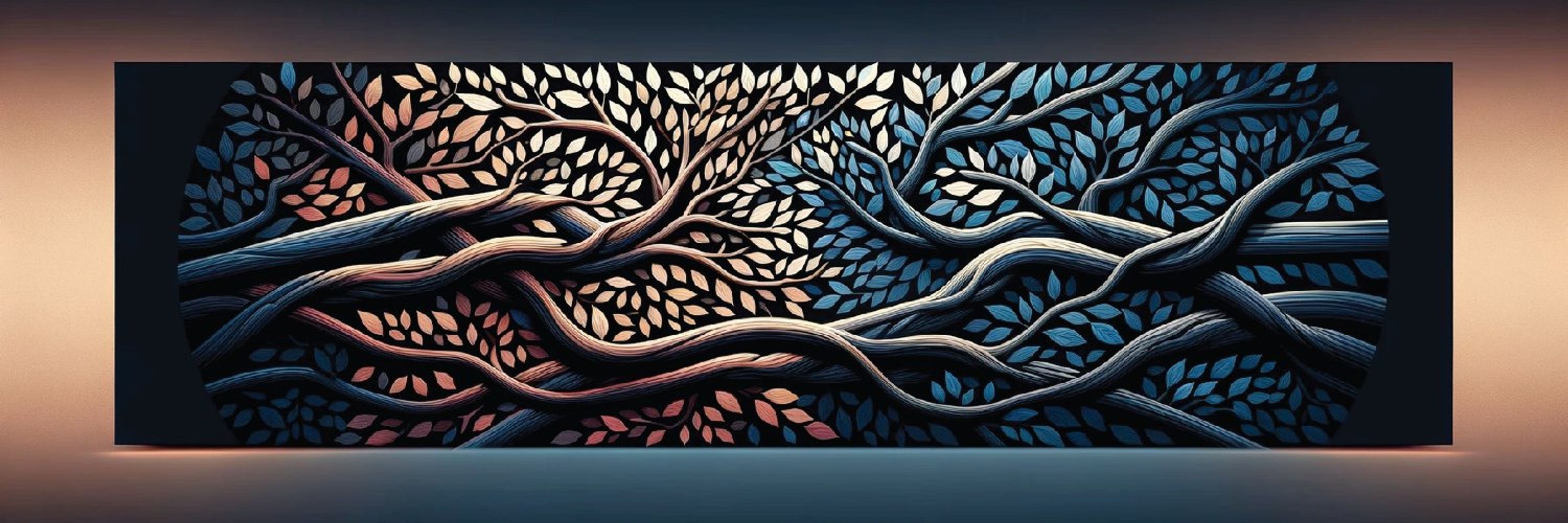
Benjamin Guinet
@benjaminguinet.bsky.social
Postdoctoral researcher at Centre for palaeogenetics | Tracing the evolution of microbes-host interactions across time. Paleovirology, metagenomic, evolutionary genomics 🧬🦣🐝🦠
Reposted by Benjamin Guinet
To rehabilitate the general view of women's contributions to the history of science, the CNRS is part of a commission that aims to inscribe the names of 72 female scientists on the Eiffel Tower. 🗼 #WomenInScience

Women scientists to be showcased on the Eiffel Tower soon
To rehabilitate the general view of women's contributions to the history of science, the CNRS is part of a commission that aims to inscribe
www.cnrs.fr
September 9, 2025 at 3:39 PM
To rehabilitate the general view of women's contributions to the history of science, the CNRS is part of a commission that aims to inscribe the names of 72 female scientists on the Eiffel Tower. 🗼 #WomenInScience
🔚
Together, these findings pave the way for exploring the microbiota of extinct species and offer deeper insights into the dynamics of their microbial ecosystems, contributing to a broader understanding of the biology of species that are no longer with us.
#Mammoths #aDNA #Paleomicrobiology #Cell
Together, these findings pave the way for exploring the microbiota of extinct species and offer deeper insights into the dynamics of their microbial ecosystems, contributing to a broader understanding of the biology of species that are no longer with us.
#Mammoths #aDNA #Paleomicrobiology #Cell

September 3, 2025 at 9:15 PM
🔚
Together, these findings pave the way for exploring the microbiota of extinct species and offer deeper insights into the dynamics of their microbial ecosystems, contributing to a broader understanding of the biology of species that are no longer with us.
#Mammoths #aDNA #Paleomicrobiology #Cell
Together, these findings pave the way for exploring the microbiota of extinct species and offer deeper insights into the dynamics of their microbial ecosystems, contributing to a broader understanding of the biology of species that are no longer with us.
#Mammoths #aDNA #Paleomicrobiology #Cell
⑧ 𝐖𝐡𝐚𝐭 𝐢𝐭 𝐭𝐞𝐥𝐥𝐬 𝐮𝐬 𝐚𝐛𝐨𝐮𝐭 𝐦𝐚𝐦𝐦𝐨𝐭𝐡 𝐡𝐞𝐚𝐥𝐭𝐡
Most microbes were harmless commensals, but some were related to modern pathogens. Although mammoths were likely exposed to infections, there is no evidence so far that diseases caused their extinction.
Most microbes were harmless commensals, but some were related to modern pathogens. Although mammoths were likely exposed to infections, there is no evidence so far that diseases caused their extinction.
September 3, 2025 at 9:15 PM
⑧ 𝐖𝐡𝐚𝐭 𝐢𝐭 𝐭𝐞𝐥𝐥𝐬 𝐮𝐬 𝐚𝐛𝐨𝐮𝐭 𝐦𝐚𝐦𝐦𝐨𝐭𝐡 𝐡𝐞𝐚𝐥𝐭𝐡
Most microbes were harmless commensals, but some were related to modern pathogens. Although mammoths were likely exposed to infections, there is no evidence so far that diseases caused their extinction.
Most microbes were harmless commensals, but some were related to modern pathogens. Although mammoths were likely exposed to infections, there is no evidence so far that diseases caused their extinction.
⑦ An 𝘌𝘳𝘺𝘴𝘪𝘱𝘦𝘭𝘰𝘵𝘩𝘳𝘪𝘹 species was recovered from a tooth of a Steppe mammoth that lived 1.1 million years ago in Adycha, Russia. This finding provides a unique opportunity to study how bacterial DNA can be preserved over such vast timescales, dating all the way back to the Early Pleistocene.
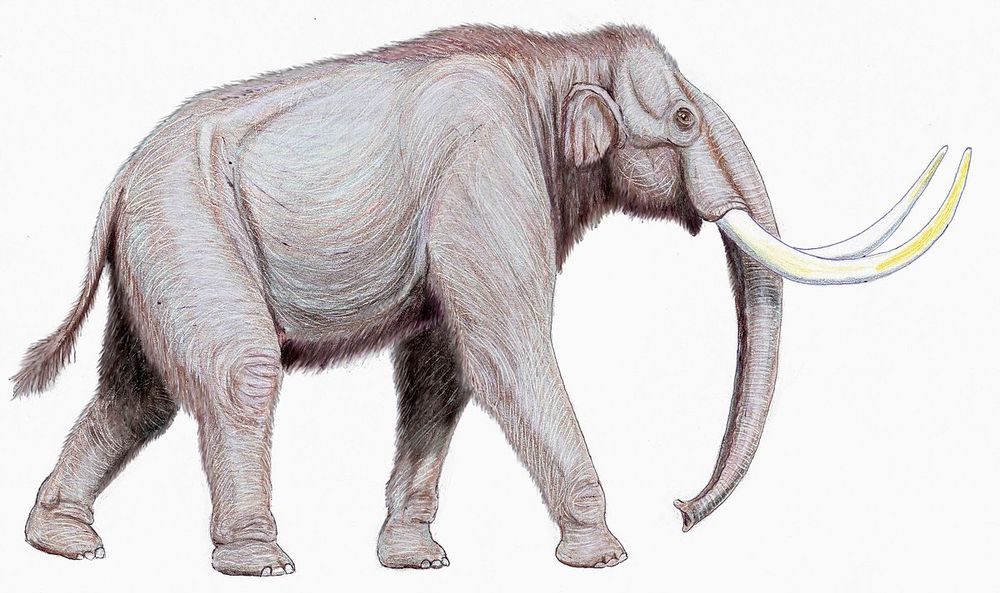
September 3, 2025 at 9:15 PM
⑦ An 𝘌𝘳𝘺𝘴𝘪𝘱𝘦𝘭𝘰𝘵𝘩𝘳𝘪𝘹 species was recovered from a tooth of a Steppe mammoth that lived 1.1 million years ago in Adycha, Russia. This finding provides a unique opportunity to study how bacterial DNA can be preserved over such vast timescales, dating all the way back to the Early Pleistocene.
⑥ A bacterium linked to an African elephant pathogen
𝘗𝘢𝘴𝘵𝘦𝘶𝘳𝘦𝘭𝘭𝘢 → closely related to the strain behind fatal septicemia in Zimbabwe elephants (2020). It may have caused similar disease in mammoths, even if this cannot be established with certainty.
𝘗𝘢𝘴𝘵𝘦𝘶𝘳𝘦𝘭𝘭𝘢 → closely related to the strain behind fatal septicemia in Zimbabwe elephants (2020). It may have caused similar disease in mammoths, even if this cannot be established with certainty.

September 3, 2025 at 9:15 PM
⑥ A bacterium linked to an African elephant pathogen
𝘗𝘢𝘴𝘵𝘦𝘶𝘳𝘦𝘭𝘭𝘢 → closely related to the strain behind fatal septicemia in Zimbabwe elephants (2020). It may have caused similar disease in mammoths, even if this cannot be established with certainty.
𝘗𝘢𝘴𝘵𝘦𝘶𝘳𝘦𝘭𝘭𝘢 → closely related to the strain behind fatal septicemia in Zimbabwe elephants (2020). It may have caused similar disease in mammoths, even if this cannot be established with certainty.
⑤ 𝐂𝐨𝐦𝐦𝐞𝐧𝐬𝐚𝐥 𝐛𝐚𝐜𝐭𝐞𝐫𝐢𝐚 𝐢𝐬𝐨𝐥𝐚𝐭𝐞𝐝 𝐟𝐫𝐨𝐦 🦷
• 𝘚𝘵𝘳𝘦𝘱𝘵𝘰𝘤𝘰𝘤𝘤𝘶𝘴 → oral microbe related to modern strains causing cavities in many other animals 🪥
• 𝘈𝘤𝘵𝘪𝘯𝘰𝘣𝘢𝘤𝘪𝘭𝘭𝘶𝘴 → probably from an oral bacteria found in 9 woolly mammoths, showing lineage continuity from the Late Pleistocene to Wrangel Island extinction ⌛
• 𝘚𝘵𝘳𝘦𝘱𝘵𝘰𝘤𝘰𝘤𝘤𝘶𝘴 → oral microbe related to modern strains causing cavities in many other animals 🪥
• 𝘈𝘤𝘵𝘪𝘯𝘰𝘣𝘢𝘤𝘪𝘭𝘭𝘶𝘴 → probably from an oral bacteria found in 9 woolly mammoths, showing lineage continuity from the Late Pleistocene to Wrangel Island extinction ⌛

September 3, 2025 at 9:15 PM
⑤ 𝐂𝐨𝐦𝐦𝐞𝐧𝐬𝐚𝐥 𝐛𝐚𝐜𝐭𝐞𝐫𝐢𝐚 𝐢𝐬𝐨𝐥𝐚𝐭𝐞𝐝 𝐟𝐫𝐨𝐦 🦷
• 𝘚𝘵𝘳𝘦𝘱𝘵𝘰𝘤𝘰𝘤𝘤𝘶𝘴 → oral microbe related to modern strains causing cavities in many other animals 🪥
• 𝘈𝘤𝘵𝘪𝘯𝘰𝘣𝘢𝘤𝘪𝘭𝘭𝘶𝘴 → probably from an oral bacteria found in 9 woolly mammoths, showing lineage continuity from the Late Pleistocene to Wrangel Island extinction ⌛
• 𝘚𝘵𝘳𝘦𝘱𝘵𝘰𝘤𝘰𝘤𝘤𝘶𝘴 → oral microbe related to modern strains causing cavities in many other animals 🪥
• 𝘈𝘤𝘵𝘪𝘯𝘰𝘣𝘢𝘤𝘪𝘭𝘭𝘶𝘴 → probably from an oral bacteria found in 9 woolly mammoths, showing lineage continuity from the Late Pleistocene to Wrangel Island extinction ⌛
③ 𝐇𝐨𝐰 𝐰𝐞 𝐝𝐢𝐝 𝐢𝐭?
• Compared sequences with soil and lab contaminants
• Checked for signs of ancient DNA degradation
• Used phylogeny to trace evolutionary relationships compared to other animal bacteria.
This let us focus on microbes truly associated with living mammoths.
What did we found ? ⬇️
• Compared sequences with soil and lab contaminants
• Checked for signs of ancient DNA degradation
• Used phylogeny to trace evolutionary relationships compared to other animal bacteria.
This let us focus on microbes truly associated with living mammoths.
What did we found ? ⬇️

September 3, 2025 at 9:15 PM
③ 𝐇𝐨𝐰 𝐰𝐞 𝐝𝐢𝐝 𝐢𝐭?
• Compared sequences with soil and lab contaminants
• Checked for signs of ancient DNA degradation
• Used phylogeny to trace evolutionary relationships compared to other animal bacteria.
This let us focus on microbes truly associated with living mammoths.
What did we found ? ⬇️
• Compared sequences with soil and lab contaminants
• Checked for signs of ancient DNA degradation
• Used phylogeny to trace evolutionary relationships compared to other animal bacteria.
This let us focus on microbes truly associated with living mammoths.
What did we found ? ⬇️
② 𝐓𝐡𝐞 𝐦𝐚𝐢𝐧 𝐜𝐡𝐚𝐥𝐥𝐞𝐧𝐠𝐞
Most bacteria found on ancient remains are 𝘱𝘰𝘴𝘵-𝘮𝘰𝘳𝘵𝘦𝘮 contaminants, originating either from the surrounding environment where mammoth were excavated or from laboratory contamination. Our goal was to identify the microbes that truly inhabited the mammoths during their lifetime.
Most bacteria found on ancient remains are 𝘱𝘰𝘴𝘵-𝘮𝘰𝘳𝘵𝘦𝘮 contaminants, originating either from the surrounding environment where mammoth were excavated or from laboratory contamination. Our goal was to identify the microbes that truly inhabited the mammoths during their lifetime.
September 3, 2025 at 9:15 PM
② 𝐓𝐡𝐞 𝐦𝐚𝐢𝐧 𝐜𝐡𝐚𝐥𝐥𝐞𝐧𝐠𝐞
Most bacteria found on ancient remains are 𝘱𝘰𝘴𝘵-𝘮𝘰𝘳𝘵𝘦𝘮 contaminants, originating either from the surrounding environment where mammoth were excavated or from laboratory contamination. Our goal was to identify the microbes that truly inhabited the mammoths during their lifetime.
Most bacteria found on ancient remains are 𝘱𝘰𝘴𝘵-𝘮𝘰𝘳𝘵𝘦𝘮 contaminants, originating either from the surrounding environment where mammoth were excavated or from laboratory contamination. Our goal was to identify the microbes that truly inhabited the mammoths during their lifetime.
① 𝐖𝐡𝐚𝐭 𝐰𝐞 𝐝𝐢𝐝?
We analyzed 483 mammoth specimens from North America and Britain to Siberia, and date from the Early Pleistocene — around one million years ago — to the extinction of the last mammoths on Wrangel Island (a remote island off the coast of Siberia) during the Holocene, 4,000 years ago.
We analyzed 483 mammoth specimens from North America and Britain to Siberia, and date from the Early Pleistocene — around one million years ago — to the extinction of the last mammoths on Wrangel Island (a remote island off the coast of Siberia) during the Holocene, 4,000 years ago.

September 3, 2025 at 9:15 PM
① 𝐖𝐡𝐚𝐭 𝐰𝐞 𝐝𝐢𝐝?
We analyzed 483 mammoth specimens from North America and Britain to Siberia, and date from the Early Pleistocene — around one million years ago — to the extinction of the last mammoths on Wrangel Island (a remote island off the coast of Siberia) during the Holocene, 4,000 years ago.
We analyzed 483 mammoth specimens from North America and Britain to Siberia, and date from the Early Pleistocene — around one million years ago — to the extinction of the last mammoths on Wrangel Island (a remote island off the coast of Siberia) during the Holocene, 4,000 years ago.
Sources :
- www.microbiologyresearch.org/content/jour...
- academic.oup.com/ve/article/1...
- www.science.org/doi/10.1126/...
- elifesciences.org/articles/85993
- royalsocietypublishing.org/doi/full/10....
- www.microbiologyresearch.org/content/jour...
- academic.oup.com/ve/article/1...
- www.science.org/doi/10.1126/...
- elifesciences.org/articles/85993
- royalsocietypublishing.org/doi/full/10....

Endoparasitoid lifestyle promotes endogenization and domestication of dsDNA viruses
The propensity to endogenize and domesticate dsDNA viruses depends on lifestyle in Hymenoptera.
elifesciences.org
July 28, 2025 at 1:00 PM
𝐂𝐨𝐧𝐜𝐥𝐮𝐬𝐢𝐨𝐧 : Pretty fascinating, isn’t it? This kind of viral domestication has evolved multiple times, independently, across different wasp lineages and viral families. As more genomes get sequenced, we’re likely just scratching the surface. Who knows what other viral hitchhikers we’ll find next?
July 28, 2025 at 1:00 PM
𝐂𝐨𝐧𝐜𝐥𝐮𝐬𝐢𝐨𝐧 : Pretty fascinating, isn’t it? This kind of viral domestication has evolved multiple times, independently, across different wasp lineages and viral families. As more genomes get sequenced, we’re likely just scratching the surface. Who knows what other viral hitchhikers we’ll find next?
7) Yes, I said domesticated! After viral DNA accidentally integrates into the host genome, it can sometimes be co-opted to boost the host’s survival. In wasps, this means using viral genes to produce virus-like particles injected with the egg, helping suppress the host insect’s immune system.
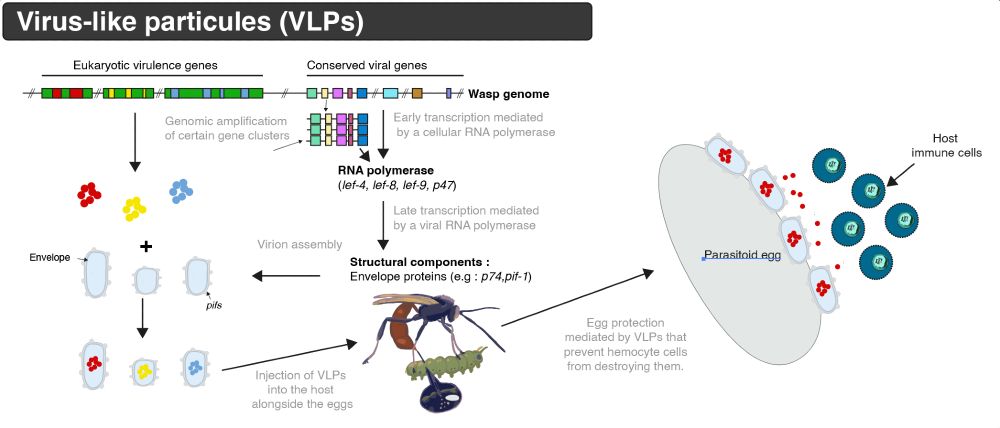
July 28, 2025 at 1:00 PM
7) Yes, I said domesticated! After viral DNA accidentally integrates into the host genome, it can sometimes be co-opted to boost the host’s survival. In wasps, this means using viral genes to produce virus-like particles injected with the egg, helping suppress the host insect’s immune system.
6) This virus–wasp relationship isn’t new, it’s been going on for millions of years. Over such long timescales viral DNA can accidentally integrate the wasp’s genome. This is not rare, take mammals for instance, part of the placenta is the result of a retrovirus domesticated gene (𝘴𝘺𝘯𝘤𝘪𝘵𝘪𝘯).
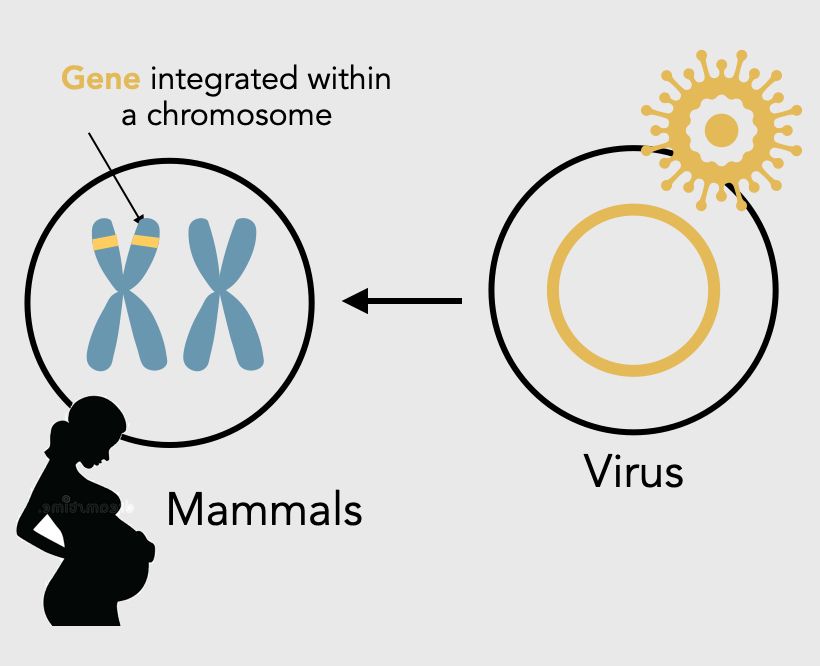
July 28, 2025 at 1:00 PM
6) This virus–wasp relationship isn’t new, it’s been going on for millions of years. Over such long timescales viral DNA can accidentally integrate the wasp’s genome. This is not rare, take mammals for instance, part of the placenta is the result of a retrovirus domesticated gene (𝘴𝘺𝘯𝘤𝘪𝘵𝘪𝘯).
5) In this red queen race, some wasps have fought back too, evolving ways to shut down the host’s immune response and protect their eggs. That’s where the 𝘍𝘪𝘭𝘢𝘮𝘦𝘯𝘵𝘰𝘷𝘪𝘳𝘶𝘴𝘦𝘴 come in, but not into their free-living forms.
July 28, 2025 at 1:00 PM
5) In this red queen race, some wasps have fought back too, evolving ways to shut down the host’s immune response and protect their eggs. That’s where the 𝘍𝘪𝘭𝘢𝘮𝘦𝘯𝘵𝘰𝘷𝘪𝘳𝘶𝘴𝘦𝘴 come in, but not into their free-living forms.
4) To understand this, let’s zoom in on the wasp’s lifestyle. For the unlucky host insect, getting injected with wasp eggs is a death sentence, unless its immune system fights back. Over time, insects have evolved smart defenses, like encapsulating the eggs to block and kill them before they hatch.
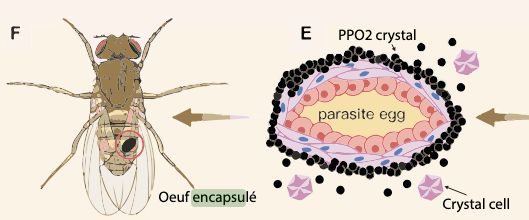
July 28, 2025 at 1:00 PM
4) To understand this, let’s zoom in on the wasp’s lifestyle. For the unlucky host insect, getting injected with wasp eggs is a death sentence, unless its immune system fights back. Over time, insects have evolved smart defenses, like encapsulating the eggs to block and kill them before they hatch.
3) However, this comes at a cost to the wasp: her egg now has to compete with others inside the same host. This is a situation they usually avoid by carefully probing their prey first. Nevertheless, these spaghetti-shaped viruses (see TEM image) also confer some mutual benefits on the wasp.

July 28, 2025 at 1:00 PM
3) However, this comes at a cost to the wasp: her egg now has to compete with others inside the same host. This is a situation they usually avoid by carefully probing their prey first. Nevertheless, these spaghetti-shaped viruses (see TEM image) also confer some mutual benefits on the wasp.
2) These DNA viruses have co-evolved with parasitoid wasps for millions of years, and they’ve learned a clever trick. They manipulate the behavior of infected female wasps to lay their eggs in hosts that are already infected with egg, increasing the chances for the virus to spread in the population.
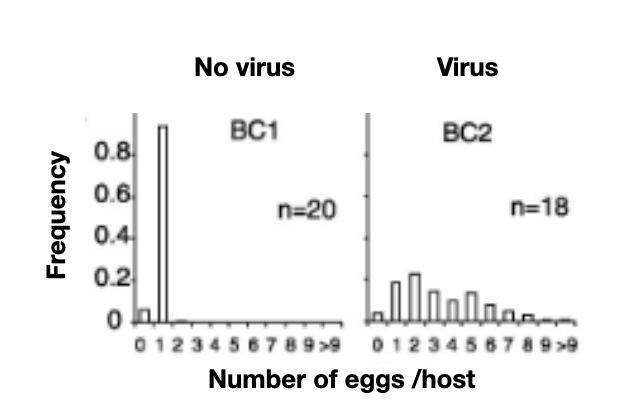
July 28, 2025 at 1:00 PM
2) These DNA viruses have co-evolved with parasitoid wasps for millions of years, and they’ve learned a clever trick. They manipulate the behavior of infected female wasps to lay their eggs in hosts that are already infected with egg, increasing the chances for the virus to spread in the population.
1) Parasitoid wasps live a brutal life: they lay eggs inside other insects, and the larvae eat their hosts from the inside out. Think Alien, but real, and with bugs.
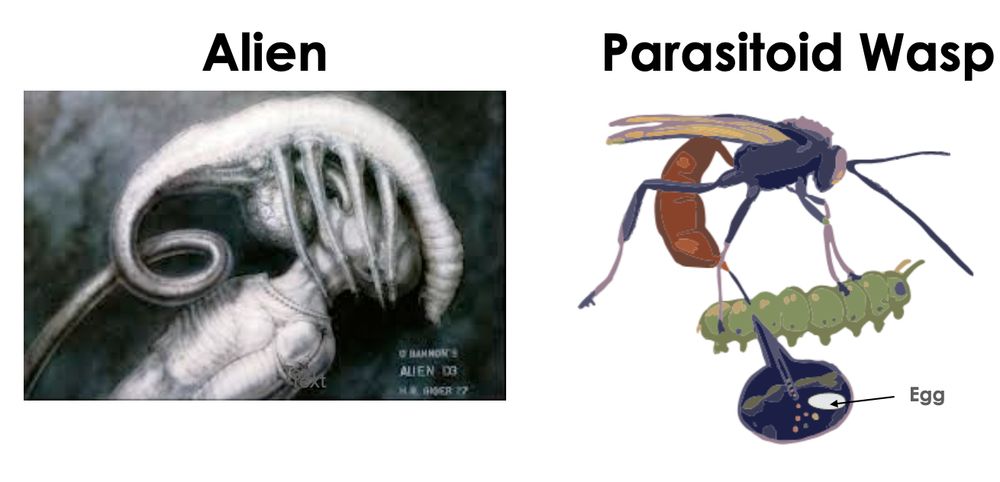
July 28, 2025 at 1:00 PM
1) Parasitoid wasps live a brutal life: they lay eggs inside other insects, and the larvae eat their hosts from the inside out. Think Alien, but real, and with bugs.
4) In contrast, damage intensity is driven by how genetically distant the reference genome is from the reads. This makes comparing damage curves between hosts and past symbionts or other microbes much trickier and needs to be taken into account by looking at the reference genome divergence distance.
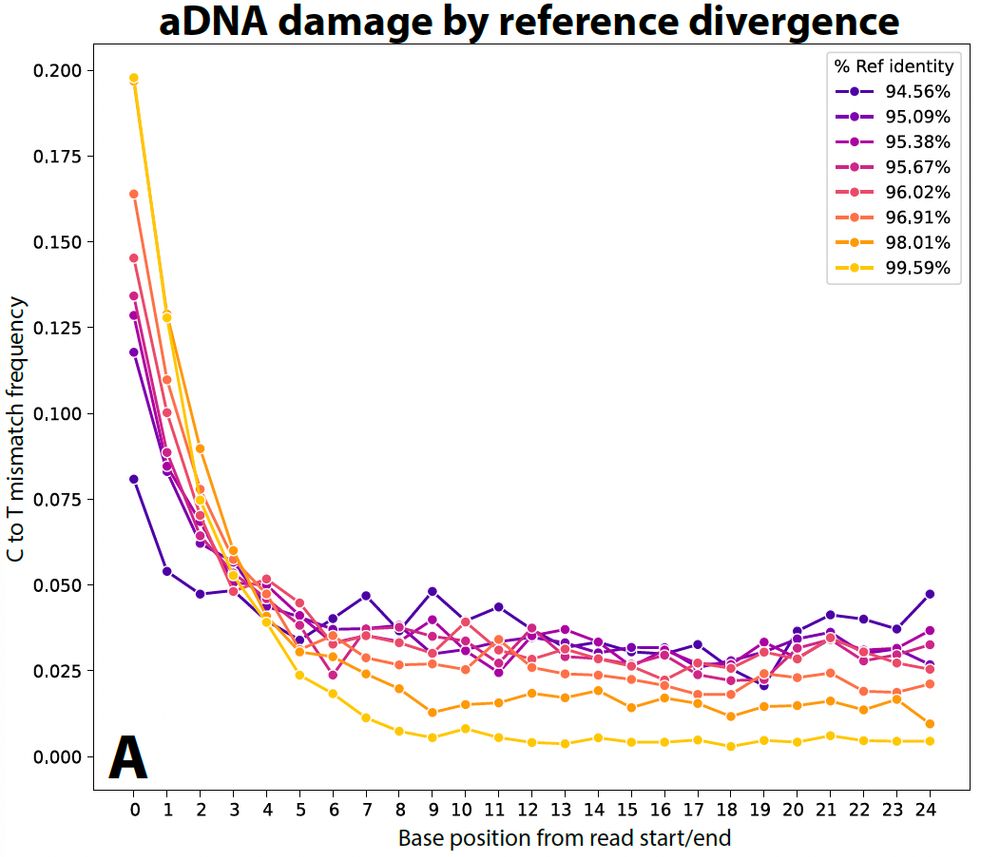
July 21, 2025 at 9:12 AM
4) In contrast, damage intensity is driven by how genetically distant the reference genome is from the reads. This makes comparing damage curves between hosts and past symbionts or other microbes much trickier and needs to be taken into account by looking at the reference genome divergence distance.
3) This is partly because fewer reads map to distant references, but we show that this mostly affects the stochasticity (variability) of damage patterns.

July 21, 2025 at 9:12 AM
3) This is partly because fewer reads map to distant references, but we show that this mostly affects the stochasticity (variability) of damage patterns.
2) In that context, when mapping aDNA reads to distant available reference genomes, we show that sequence divergence may obscure such C-to-T damage signals.
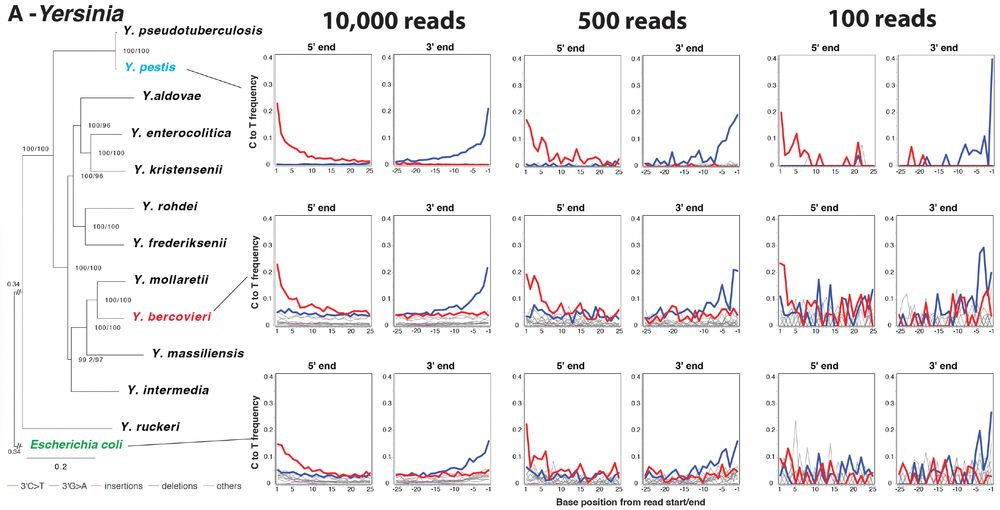
July 21, 2025 at 9:12 AM
2) In that context, when mapping aDNA reads to distant available reference genomes, we show that sequence divergence may obscure such C-to-T damage signals.

